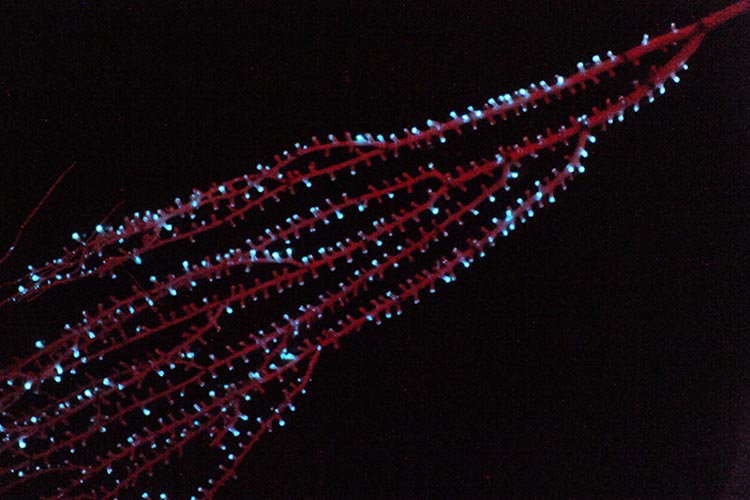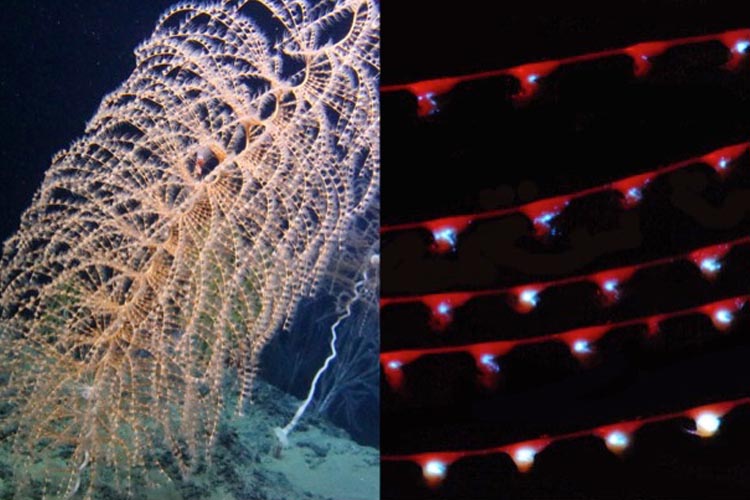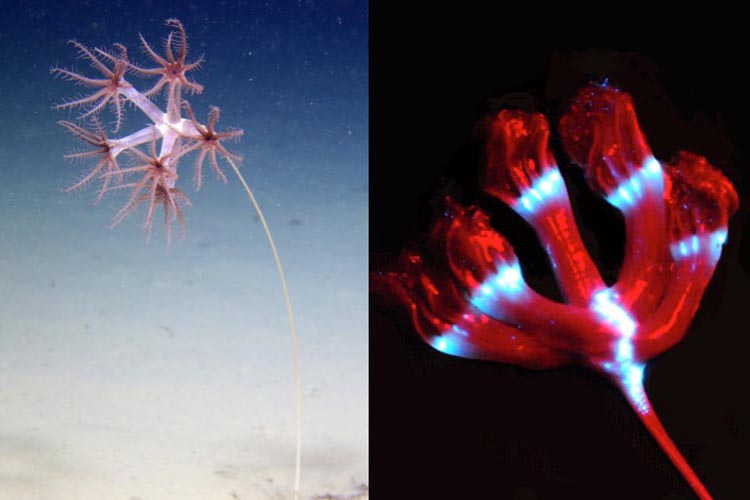
A new study has suggested that bioluminescence in animals evolved at least 540 million years ago, some 300 million years earlier than has previously been recorded.
The study, led by scientists from the Smithsonian National Museum of Natural History suggested that the trait first evolved in a subclass of Anthozoans – the class containing corals and anemones – known as octocorallia, which is made up of all the soft corals, blue coral and sea pens.
Bioluminescence – through which living organisms produce light through chemical reactions – has independently evolved at least 94 times in nature, and is used in a wide range of behaviours, from communication and courtship to camouflage and hunting. It is present across a wide variety of both marine and terrestrial species, from bacteria, fungi and insects to dinoflagellates, fish and jellyfish.
To date, the earliest known example of bioluminescence in marine animals was thought to be around 267 million years ago in ostracods, tiny crustaceans which are distributed – some 13,000 species of them – throughout the world’s waters. Where and when the phenomenon originated, however, has been shrouded in uncertainty.
You may also like
- Bonaire’s bioluminescent Halloween light performance
- Horrible natural histories – the sex lives of sea devils
- Planktonia, the nightly migration of the Ocean’s smallest creatures
- Everything you need to know about coral reefs
- The world has more coral reefs than first thought

‘We wanted to figure out the timing of the origin of bioluminescence, and octocorals are one of the oldest groups of animals on the planet known to bioluminesce,’ said the study’s lead author, Danielle DeLeo. ‘So, the question was – when did they develop this ability?’
The team began the process using a detailed evolutionary tree of the octocorals comprised of genetic data from 185 different living species, previously published by Andrea Quattrini and Catherine McFadden, two of the new study’s co-authors. By comparing similarly structured octocoral fossils of known ages with more modern specimens, the team were able to determine approximately when a species had diverged and split into separate branches of the evolutionary record.
The scientists used the comparison to perform an ‘ancestral state reconstruction’, a process whereby the known characteristics of living species can be extrapolated backwards in time to find their common ancestors.
‘If we know these species of octocorals living today are bioluminescent, we can use statistics to infer whether their ancestors were highly probable to be bioluminescent or not,’ said Quattrini. ‘The more living species with the shared trait, the higher the probability that as you move back in time that those ancestors likely had that trait as well.’

The statical methodology revealed that the most recent common ancestor of the octocorals was, itself, bioluminescent, placing the origin of the phenomenon to around 542 million years ago at the start of the Cambrian era, the period in Earth’s history when multi-cellular life really began to take hold.
Having determined the time period in which bioluminescence was likely to have evolved, the next question the scientists are asking is why it evolved. What purpose did it serve in colonial polyps that have no eyes? Why did it evolve in other, unrelated species? Could it have evolved even earlier, in the ancestors of octocorals?
540 million years is a long way to look into the past. Eyes and other photosensitive organs had already evolved and are found in early Cambrian creatures such as trilobites, which the scientists say lends plausibility to the idea that bioluminescence was used as a form of communication between anthozoans and other creatures, perhaps as a defence mechanism.

The team also notes previous studies which suggest that the chemical reaction which causes bioluminescence may have evolved as a mechanism for removing excessive oxygen – which can be toxic to marine life in sufficient quantities – and the resulting light was co-opted as a method of communication at a later stage in the organisms’ evolution.
Regardless of its origins, the fact that bioluminescence has been around for so long indicates that it has a successful evolutionary purpose. DeLeo said she and some of the study’s co-authors are currently working on a ‘thorough accounting’ of how many of the 3,000 or more species of octocoral are bioluminescent, and which have lost the trait.
They hope the test will shed further light on how and when bioluminescence first evolved, adding it is possible that future studies will determine that it is, in fact, even older.
The paper ‘Evolution of bioluminescence in Anthozoa with emphasis on Octocorallia’ by Danielle M DeLeo, Manabu Bessho-Uehara, Steven HD Haddock, Catherine S McFadden and Andrea M Quattrini is published under an open access license in Proceedings of the Royal Society B.
- Order now! DIVE Autumn 2025 print issue preview - 25 September 2025
- Ten fascinating facts about sperm whales - 24 September 2025
- DV Tenacious team discovers ST Seiner steam trawler - 18 September 2025


